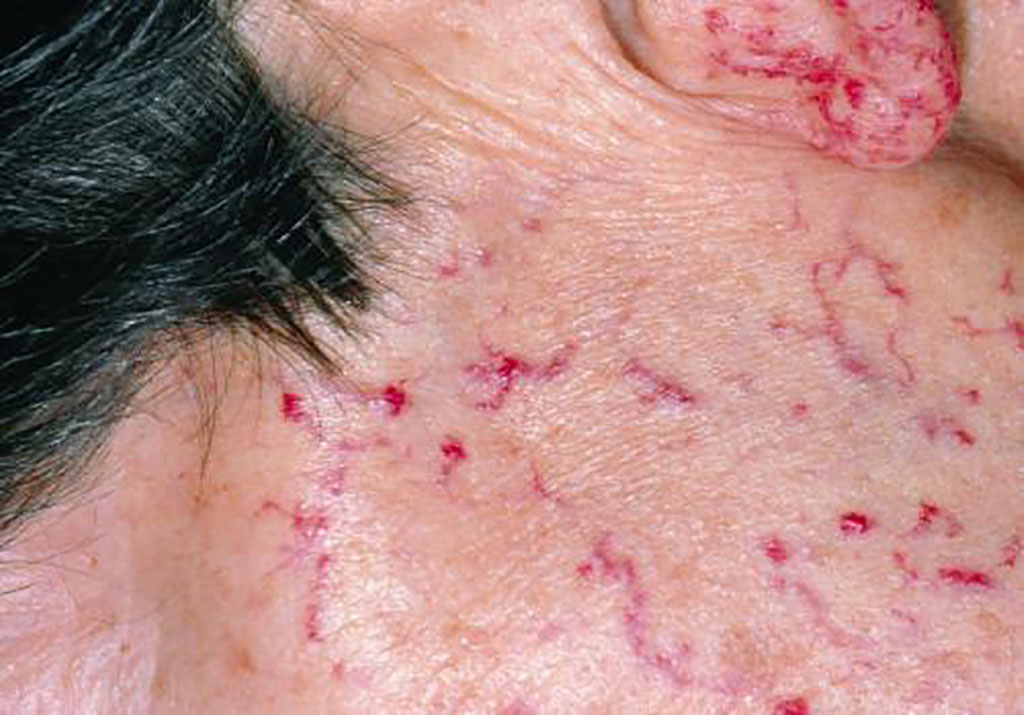Whole Genome Sequences Discriminate Hereditary Hemorrhagic Telangiectasia Phenotypes
Posted on 26 Jul 2022
The abnormal vascular structures of hereditary hemorrhagic telangiectasia (HHT) often cause severe anemia due to recurrent hemorrhage, but HHT causal genes do not predict the severity of hematological complications.
Telangiectasia and larger arteriovenous malformations (AVMs) are characterized by defective vascular walls predisposing to hemorrhage. Individuals affected by HHT experience spontaneous, recurrent nosebleeds due to abnormal nasal vasculature and exhibit small, visible telangiectatic vessels that tend to develop on the lips, oral cavity, and finger pads.

Medical Scientists at the Imperial College School of Medicine (London, UK) tested for chance inheritance and clinical associations of rare deleterious variants in which loss-of-function causes bleeding or hemolytic disorders in the general population. In double-blinded analyses, all 104 patients with HHT from a single reference center recruited to the 100,000 Genomes Project were categorized on new MALO (more/as-expected/less/opposite) sub-phenotype severity scales, and whole genome sequencing data were tested for high impact variants in 75 HHT-independent genes encoding coagulation factors, or platelet, hemoglobin, erythrocyte enzyme, and erythrocyte membrane constituents.
Genes were primarily selected based on causal influences on coagulation, hemorrhage, and/or red blood cell (erythrocyte) survival exposed in the general population by bleeding disorders or congenital hemolytic anemias. The burden of usual genetic variation was compared between genes and gene categories using the gene damage index and by genic intolerance measured by the residual variation intolerance score. Variant deleteriousness was ranked by Combined Annotation Depletion (CADD) scores.
The team reported that rare variants (all gnomAD allele frequencies <0.003) were identified in 56 (75%) of these 75 HHT-unrelated genes. Deleteriousness assignments by Combined Annotation Dependent Depletion (CADD) scores >15 were supported by gene-level mutation significance cutoff scores. CADD >15 variants were identified in 38/104 (36.5%) patients with HHT, found for 1/10 patients within platelet genes; 1/8 within coagulation genes; and 1/4 within erythrocyte hemolytic genes. In blinded analyses, patients with greater hemorrhagic severity that had been attributed solely to HHT vessels had more CADD-deleterious variants in platelet and coagulation genes. However, the HHT cohort had 60% fewer deleterious variants in platelet and coagulation genes than expected.
The authors concluded that the potential to unmask pathophysiologically relevant processes is augmented by categorizing patients using severity scales that additionally influence risk-benefit considerations inherent in therapeutic provision. The study was published on July 7, 2022 in the journal Blood Advances.
Related Links:
Imperial College School of Medicine













